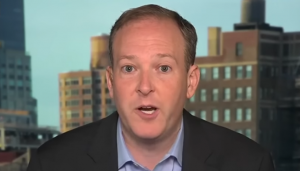Nandigram in East Medinipur district of West Bengal, about 150 kilometres from Kolkata, has become the most watched constituency after Chief Minister Mamata Banerjee, 66, decided to contest against BJP’s Suvendhu Adhikari, her protégé-turned-bete noire. Nandigram is key to both – the ruling party and the opposition given its history of resistance and the subsequent rise of Mamata Banerjee.
Fourteen years ago, a farmland agitation in Nandigram changed West Bengal’s political landscape and uprooted the 34-year-old Left Front government after their futile bid to acquire farmland for a chemical hub in the state, and propelled the Trinamool Congress-led by Mamata Banerjee to power in 2011.
Today, in 2021 battle lines are redrawn in Nandigram but this time Mamata Banerjee is on the other side taking on former TMC leader Suvendhu Adhikari, who joined the BJP along with Trinamool Congress MP Sunil Mondal and nine sitting MLAs in December. Nandigram assembly constituency votes on April 1.
Suvendhu Adhikari, who won Nandigram in 2016 on Trinamool ticket, has adopted the ruling party’s “outsider” argument about the BJP against Chief Minister Mamata Banerjee in Nandigram and calls himself “bhoomiputra” (son of the soil).
Of the 2,57,299 voters (check voters), about 62,000 are Muslims and this is being seen by the BJP as a deciding factor. Till 2009, the seat was held by the Left Front with the only exception being the 1977 polls when the Janata Party emerged victorious. Suvendhu Adhikari secured 67% votes in Nandigram as TMC candidate in the 2016 assembly election, while the BJP had to settle for just 5%.
The latter, however, heavily dented the ruling party in the 2019 Lok Sabha elections and won 29% votes, nibbling primarily into the Left Front’s vote share. The constituency stands polarised, undoubtedly with the BJP going all out with the Hindu pitch and Mamata Banerjee playing both sides.
Key issues in Nandigram
Nandigram, however, is not the one back in 2007. The people of the region need industrial growth, more job opportunities, and development.
“An industrial hub here would not just generate employment in the area but also ensure our children live with us. If not in Nandigram, industrial growth in surrounding areas would also be of help. The youth won’t have to venture out searching for jobs,” said Ajit Jana, a resident of Adhikaripara.
“Nandigram movement is a thing of the past,” says Joydeb Mondal of Gokulnagar, who works in a factory in Gurugram. He feels if people are given good compensation for the land acquired, they wouldn’t resist industrial development.
Activist-turned-chief minister Mamata Banerjee, having got a whiff of popular sentiments, has promised to turn Nandigram into a model village and ensure no one is left unemployed in the area. The BJP too has promised to set up industries in the area.
The locals are also hoping for the revival of the shipyard project in Nandigram’s Jellingham area, on the banks of Hooghly river — the project that got off-tracked after the
Left Front’s exit. People in the region are also waiting to see a wagon components manufacturing unit come up at Jellingham, a promise that Mamata Banerjee made during her tenure as the railway minister in 2011.
No industrialist has set foot in the area after the Special Economic Zone (SEZ) project was scrapped due to the Nandigram agitation, which left an unspecified number of people dead, including 14 in a police firing. As a result, Nandigram continues to be a primarily agricultural-driven economy as it supplies rice, shrimp farming vegetables and fresh fish to adjoining localities.
So what has changed in Nandigram?
Which all factors led to a change in the mindset of locals after fourteen years? The transition was waiting to happen as the monthly income of most families in Nandigram does not exceed Rs 6000, says Bhabani Das, a former Bhumi Uchhed Pratirodh Committee (BUPC) leader.






